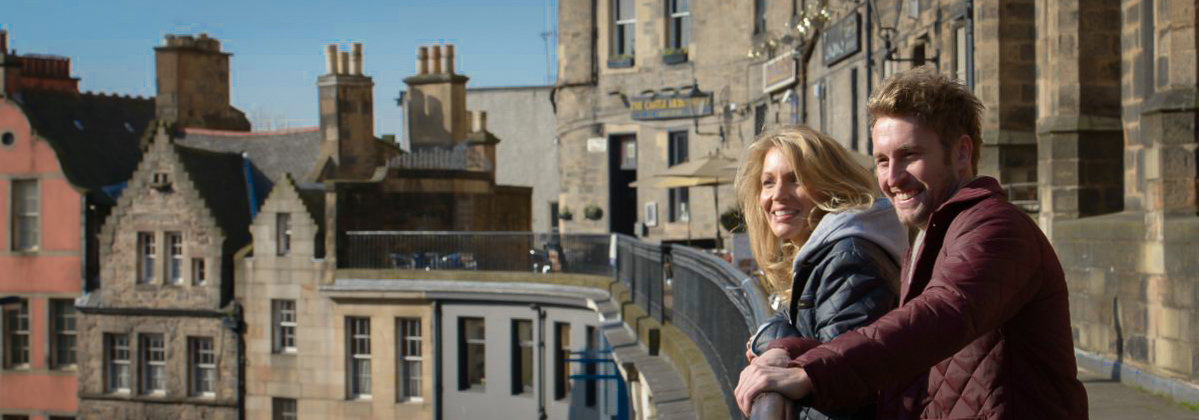SCOTLAND
Edinburgh & Galashiels
Edinburgh is one of Europe’s most beautiful cities. Situated on a series of rocky hills overlooking the sea, it is a city intimately entwined with its landscape. From the Old Town’s picturesque jumble of medieval tenements piled high along the Royal Mile, its turreted skyline strung between the black, bull-nosed Castle Rock and the russet palisade of Salisbury Crags, to the New Town’s neat grid of neoclassical respectability, all columns and capitals, porticoes and pediments, the city offers a constantly changing perspective. In the words of Robert Louis Stevenson, “Edinburgh is a dream in masonry and living rock.”
Edinburgh boasts a rich and intriguing history which is evident in its streets and everyday life. Scotland’s capital grew around the Old Town, an area stretching from Edinburgh castle at the top of the Royal Mile to the Grassmarket where public hangings formerly took place. During the Victorian era, Edinburgh earned a nickname as ‘Auld Reekie’ due to the smoke from the steam engines and the pollution of the industrial revolution. After 1583, the city was also a hub for education with the formation of the University of Edinburgh. Alexander Graham Bell, Charles Darwin and James Hutton produced major works while living in Edinburgh.
Today, Edinburgh combines both modernity and tradition. Modern architecture such as the Scottish Parliament sits alongside wonderful baroque buildings including the Palace of Holyroodhouse. Each community is individual, providing a unique sense of the past and present.
Galashiels is a historic town in Scottish Borders located between Edinburgh and Carlisle. Galashiels is closely tied to the textile industry. Some of the earliest textile mills were established in town during the Industrial Revolution. Today, Galashiels is a vibrant town full of students, cafes, restaurants and pubs.
Scotland
Scotland is a country that is part of the United Kingdom. Occupying the northern third of the island of Great Britain, it shares a border with England to the south and is bounded by the North Sea to the east, the Atlantic Ocean to the north and west, and the North Channel and Irish Sea to the southwest. Scotland also incorporates more than 790 islands, including the Northern Isles and the Hebrides.
People settled in modern-day Scotland around 9,500 years ago, and the first villages were formed around 6,000 years ago. The Romans occupied Great Britain, including large parts of Scotland, from 80 AD until the 6th century. The Kingdom of Scotland emerged as an independent sovereign state in the Early Middle Ages and continued to exist until 1707. On 1 May 1707, Scotland entered into a political union with England to create the Kingdom of Great Britain despite popular opposition. To this day, a large portion of the population is pushing for a referendum of independence from the United Kingdom.
Scotland has limited self-government within the United Kingdom. Scotland’s head of state is the monarch of the United Kingdom. The UK Parliament retains power over taxation, social security, defense, international relations and broadcasting. The Scottish Parliament has legislative authority for all other areas relating to Scotland, as well as limited power to vary income tax.
The Scottish economy comprises many different sectors. Oil was discovered off the coast and remains an important element. Shipbuilding and industry have seen a marked decline while the service sector (especially finance and call centers) has increased in importance. Fishing and agriculture remain important and the country’s ‘Silicon Glen’ has also seen growth in the manufacture of computers and mobile phones. Scotch whisky production continues to have significance, as does the country’s tourism industry.
QUICK FACTS
- Population of Scotland: 5.4 million
- Population of Edinburgh: 482,000
- Official Language: English
- Currency: British Pound (GBP)
- Local time in Edinburgh: GMT+8
- High temp in Edinburgh: July: 88°F
- Low temp in Edinburgh: January: 34°F







